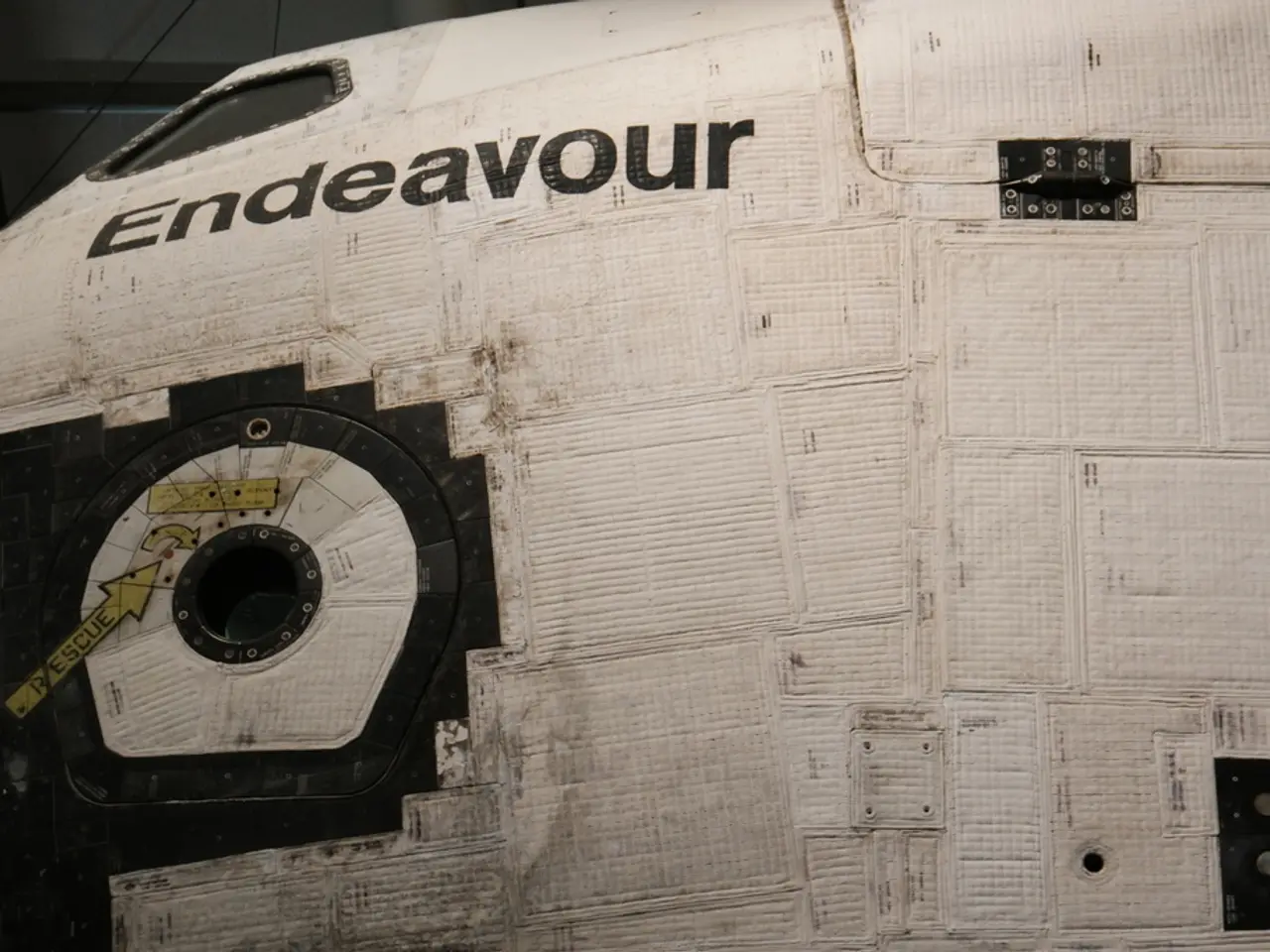United States President Trump pushing for less restrictions in space sector to bolster domestic space industry
In the rapidly evolving world of space exploration, SpaceX's Starship launches have sparked a debate over their potential environmental impacts. The concerns are manifold, ranging from wildlife disturbance to air quality issues, physical damage, and cultural and ecological concerns, primarily in the U.S.
At the Kennedy Space Center in Florida, where sensitive wildlife species like the bald eagle reside, launches could cause stress and disruption due to noise, vibrations, sonic booms, collisions, and restricted access during operations. Similarly, at the Texas Boca Chica site, frequent launches have reportedly resulted in destruction of wildlife habitats, endangered species threats, fire damage to federally protected lands, seismic disturbances felt miles away, and property damage for local residents [1][4].
The emissions produced by these launches, particularly nitrogen oxides, may exceed ambient air quality standards and contribute to air pollution, although other pollutants like carbon monoxide remain below thresholds [2]. However, it's worth noting that water use for launches is substantial but largely recycled, with some vaporization losses during engine tests [2].
Regulatory agencies, such as the FAA and NASA, have conducted environmental assessments for operations at Florida’s Launch Complex 39A, finding no significant impact. Yet, public and ecological stakeholder scrutiny continues, particularly regarding cumulative effects from multiple launches each year (up to 44 proposed at Florida) [3][5].
These concerns have prompted calls for a comprehensive environmental impact statement (EIS) and a temporary halt on launches. The ongoing review and mitigation efforts by regulatory agencies aim to balance approval with stricter oversight and further studies, as demanded by community and environmental groups [1][4][5].
In 2024, SpaceX, under the leadership of Elon Musk, had over 130 launches, reflecting the company's dominance in the global space launch market [6]. While Musk advocates for deregulation in the space sector, critics like Jared Margolis, an attorney at the Center for Biological Diversity, argue that his strategies put people and wildlife at risk due to the potential for rocket explosions causing devastation [7].
The U.S. policy aims to strengthen its dominant position in space by promoting competition in the launch market. This policy, initiated in the early 2000s, has allowed commercial space activities to flourish, with Trump relying on these activities to carry out several of his projects, including sending men to the Moon and Mars [8]. Trump's directives for a significant increase in the pace of commercial launches and innovative space activities by 2030 further emphasize this commitment [9].
However, Trump's orders to remove as many administrative hurdles as possible for commercial space activities, including environmental regulations, have raised concerns among environmental groups and communities living near launch sites [10]. The balance between environmental protection and the drive for space exploration remains a significant challenge as SpaceX and other private space companies continue to push the boundaries of what is possible.
References:
- SpaceX launches pose risks to wildlife, air quality, and cultural resources
- Environmental Impacts of SpaceX Starship Launches
- FAA Assesses Environmental Impacts of SpaceX Launches at Florida's Launch Complex 39A
- SpaceX's Texas Launches Threaten Endangered Species, Indigenous Lands
- Calls for Comprehensive Environmental Impact Statement for SpaceX Launches
- SpaceX's Record-Breaking Year: Over 130 Launches in 2024
- Attorney Criticizes Elon Musk's SpaceX Strategy for Environmental Risks
- Trump's Space Policy: A Drive for Competition and American Dominance
- Trump's Directive: Increase Commercial Launches and Space Activities by 2030
- Environmental Groups Concerned Over Trump's Relaxation of Regulations for Space Activities
In light of the ongoing environmental concerns related to SpaceX's launches, there have been demands for a comprehensive Environmental Impact Statement (EIS) and a halt on launches, as the potential threats extend beyond air pollution to wildlife, cultural resources, and sensitive ecosystems in the U.S., as reported by various studies and community groups. The general-news headlines reflect the political debate over the need for stricter regulations in the space industry to balance the drive for space exploration with the protection of the environment.







